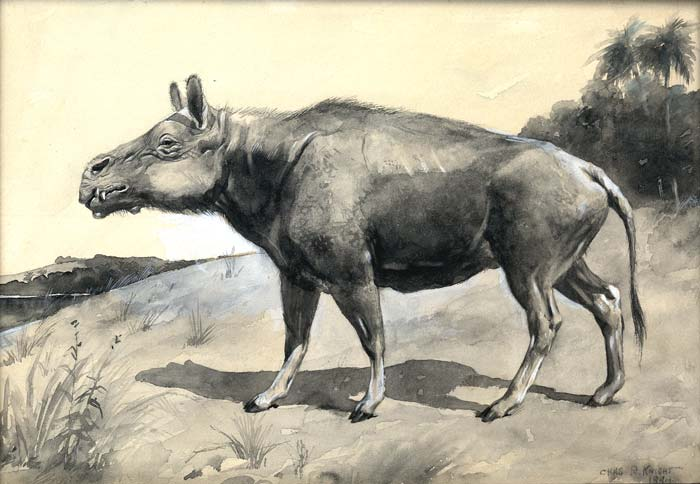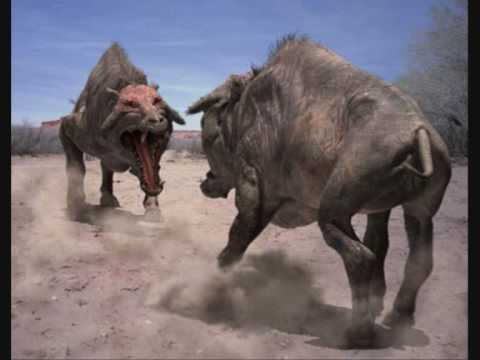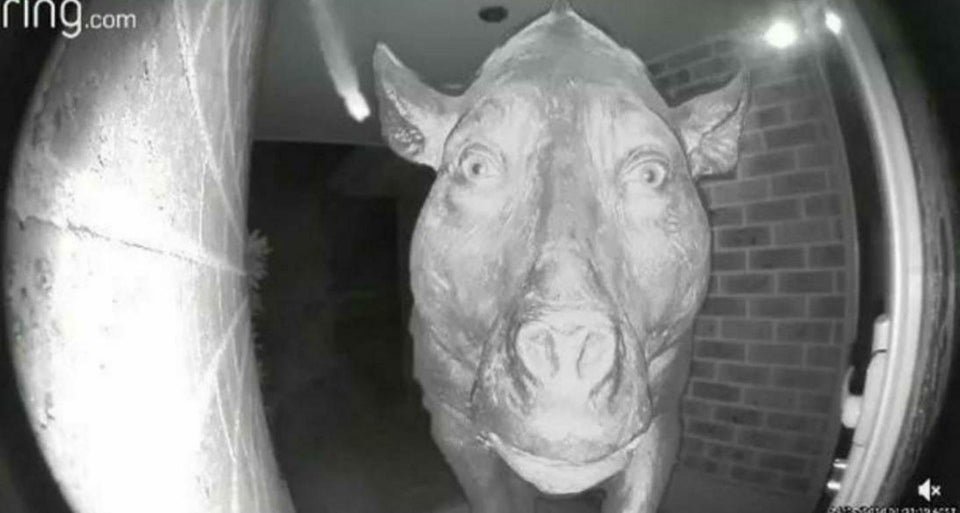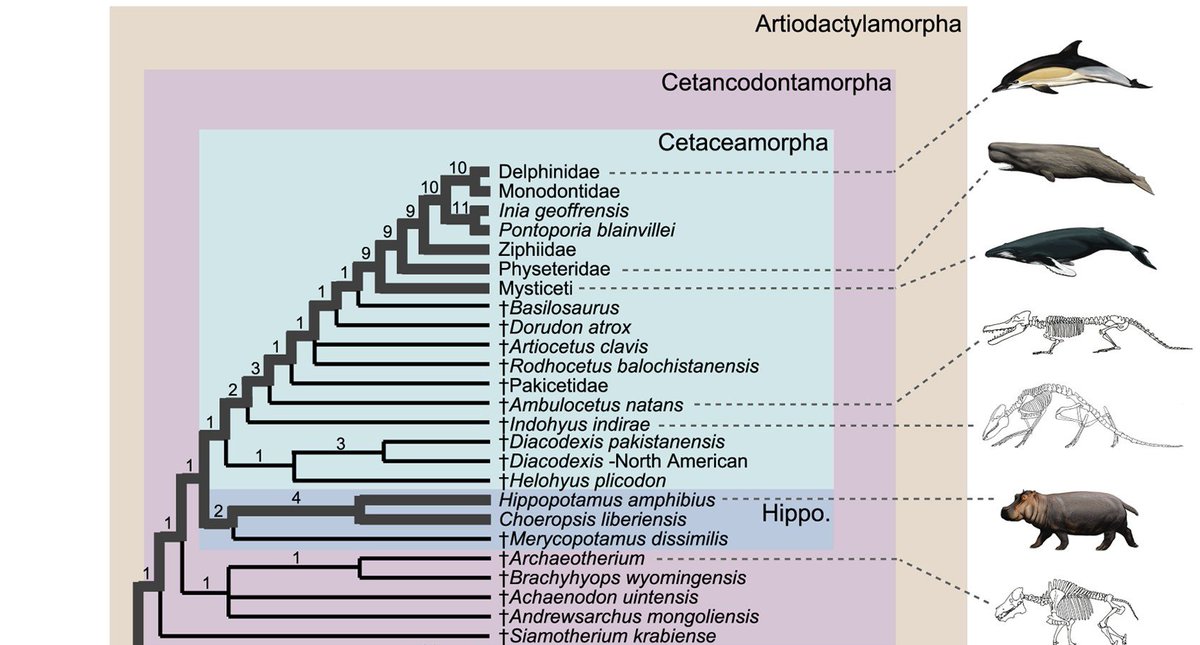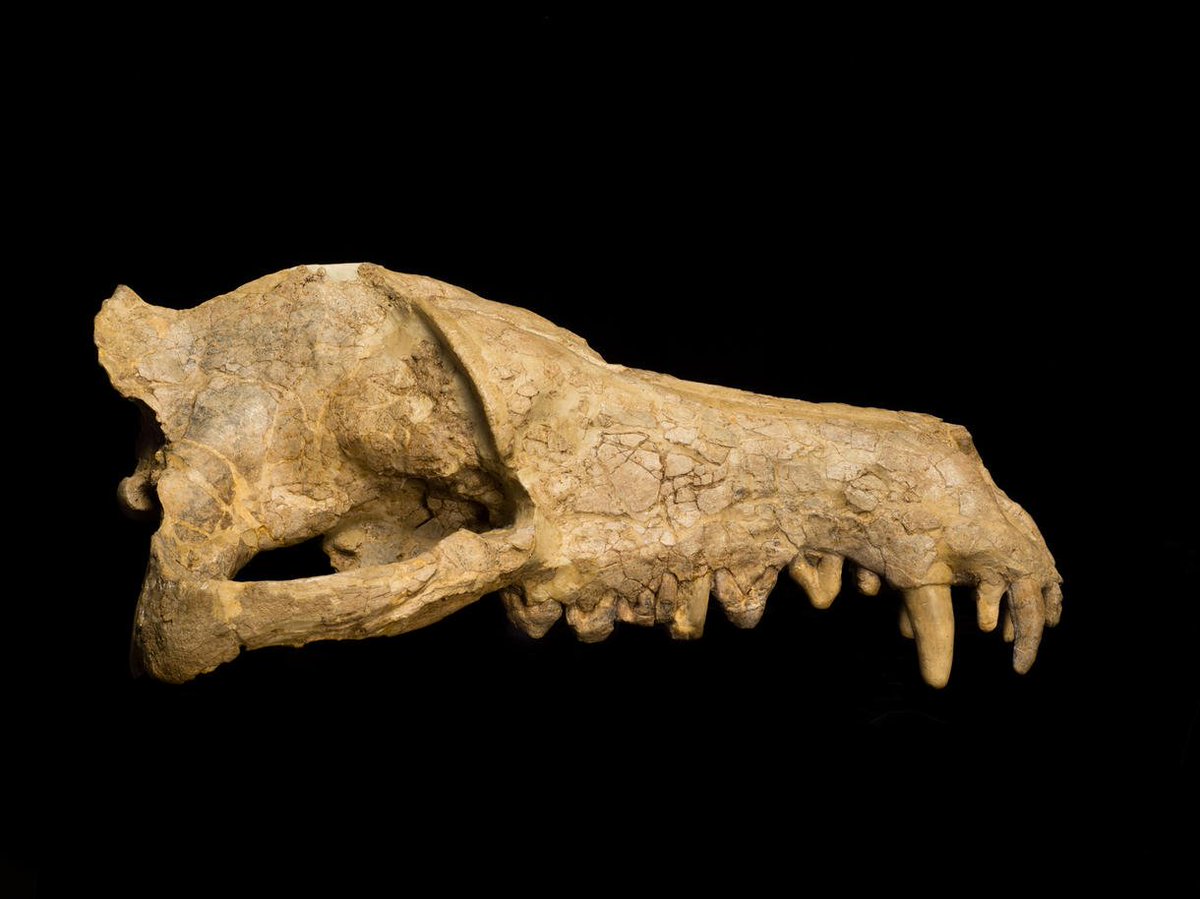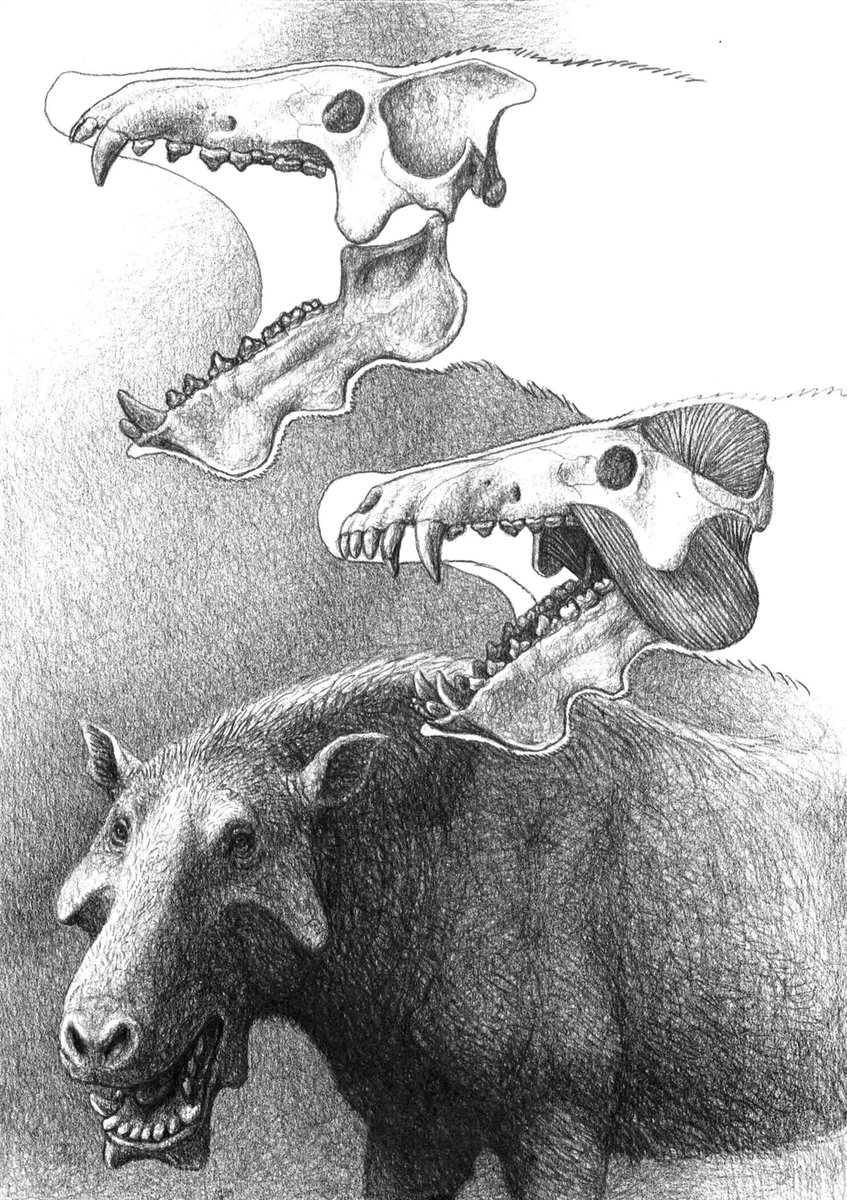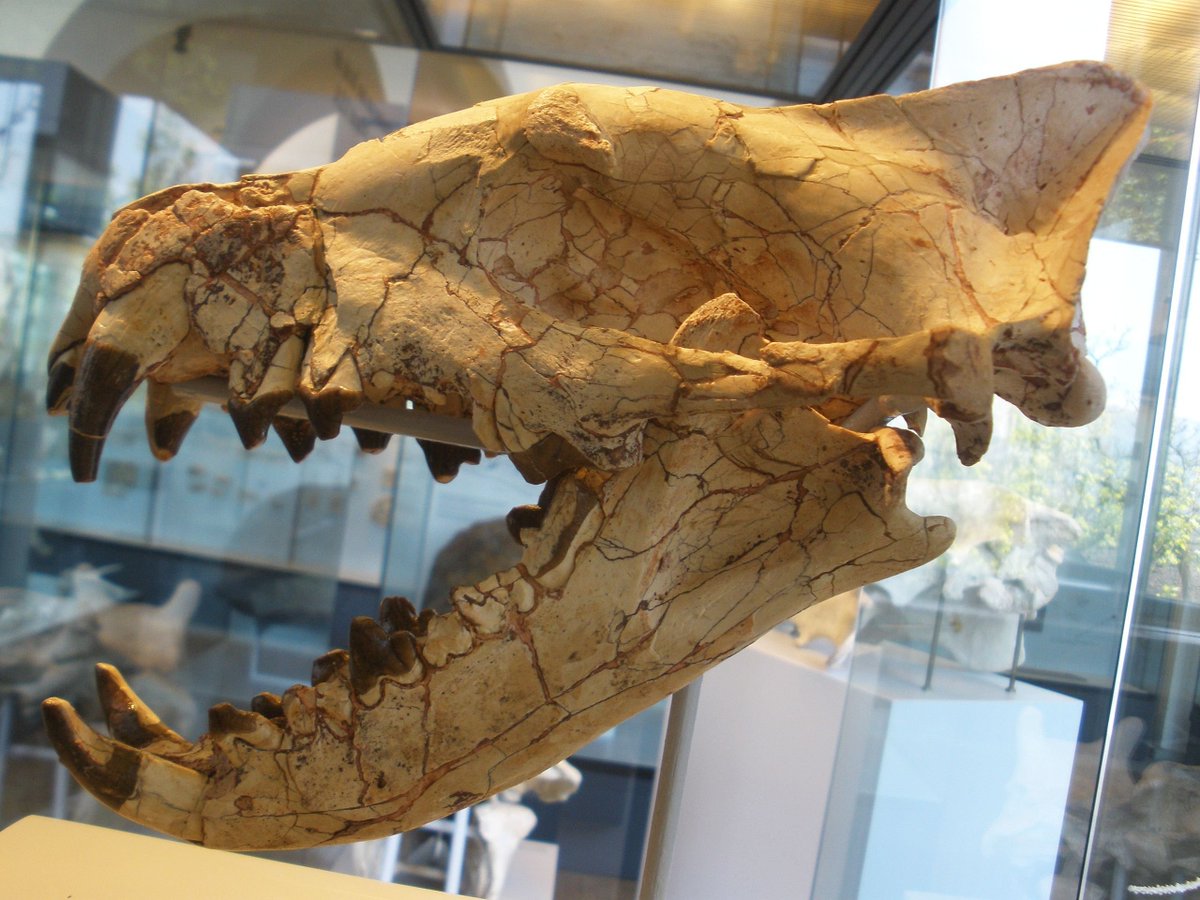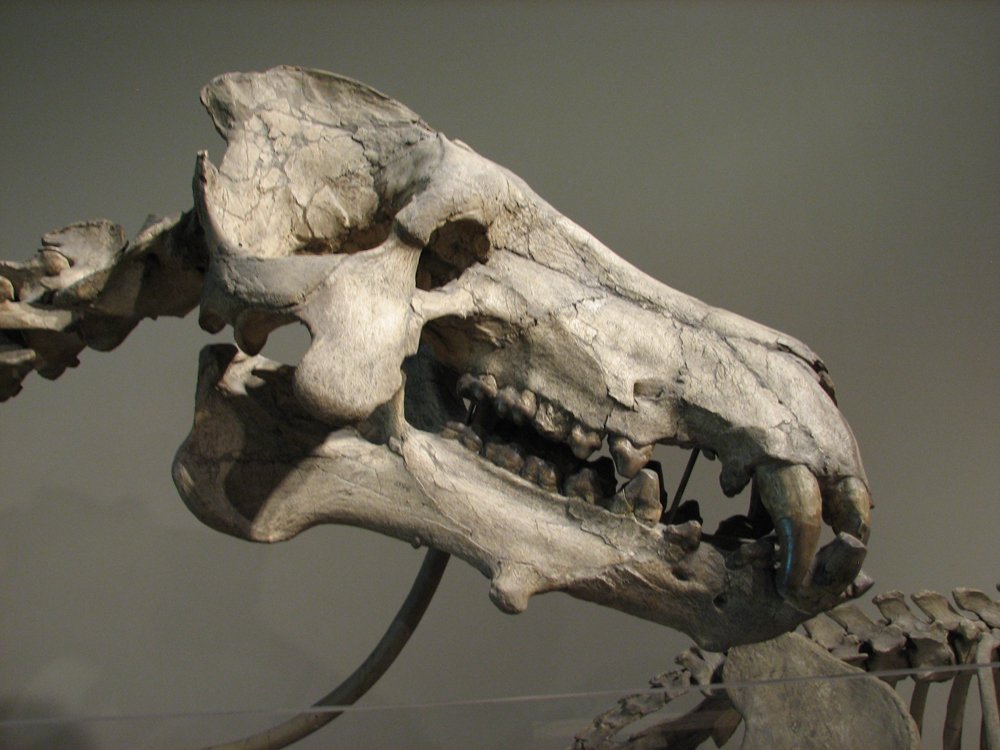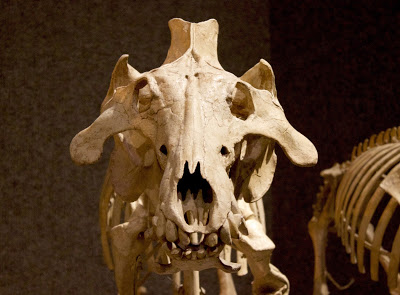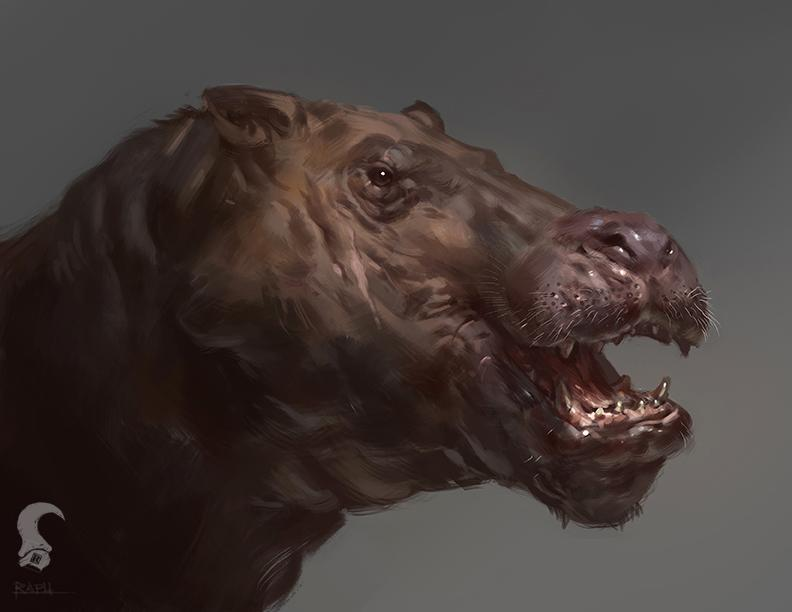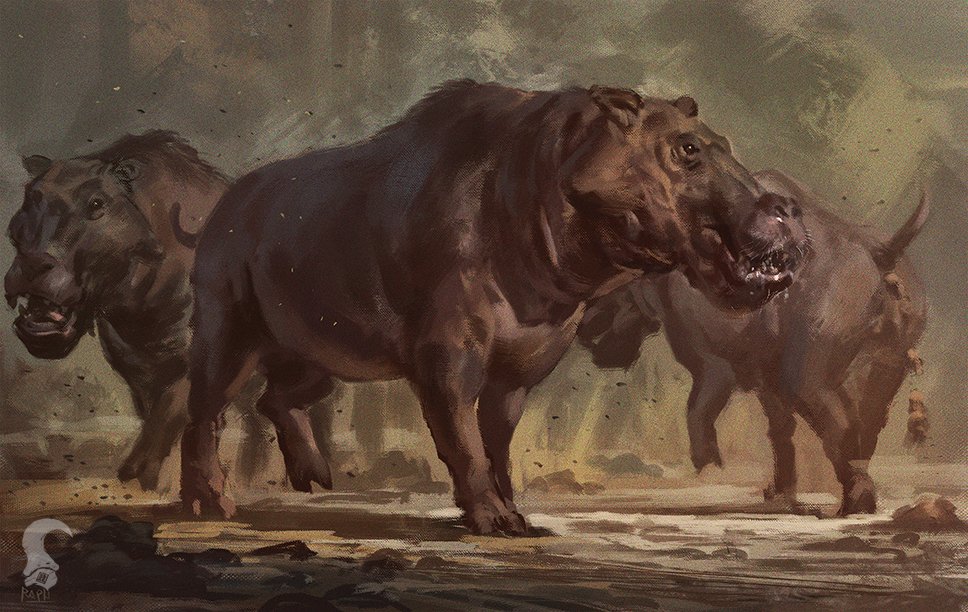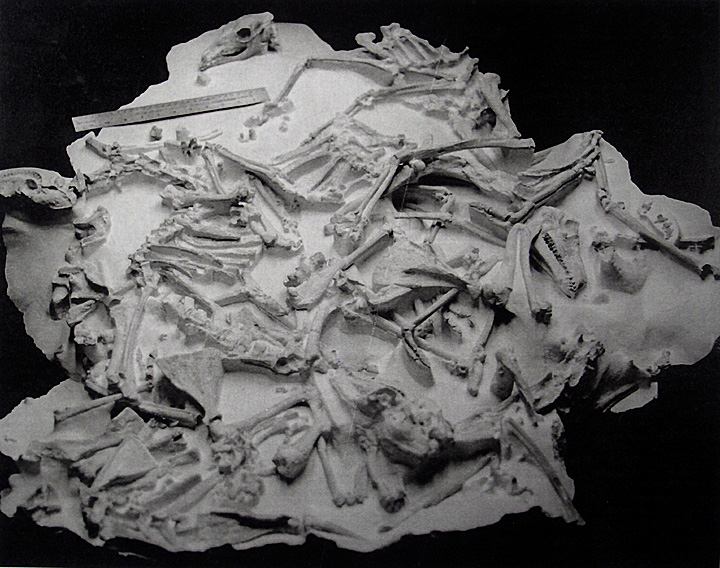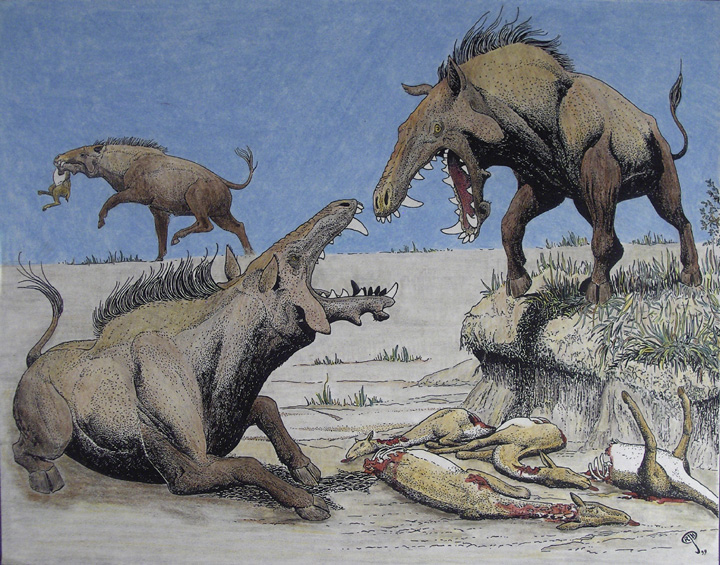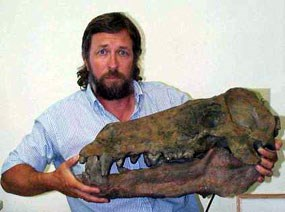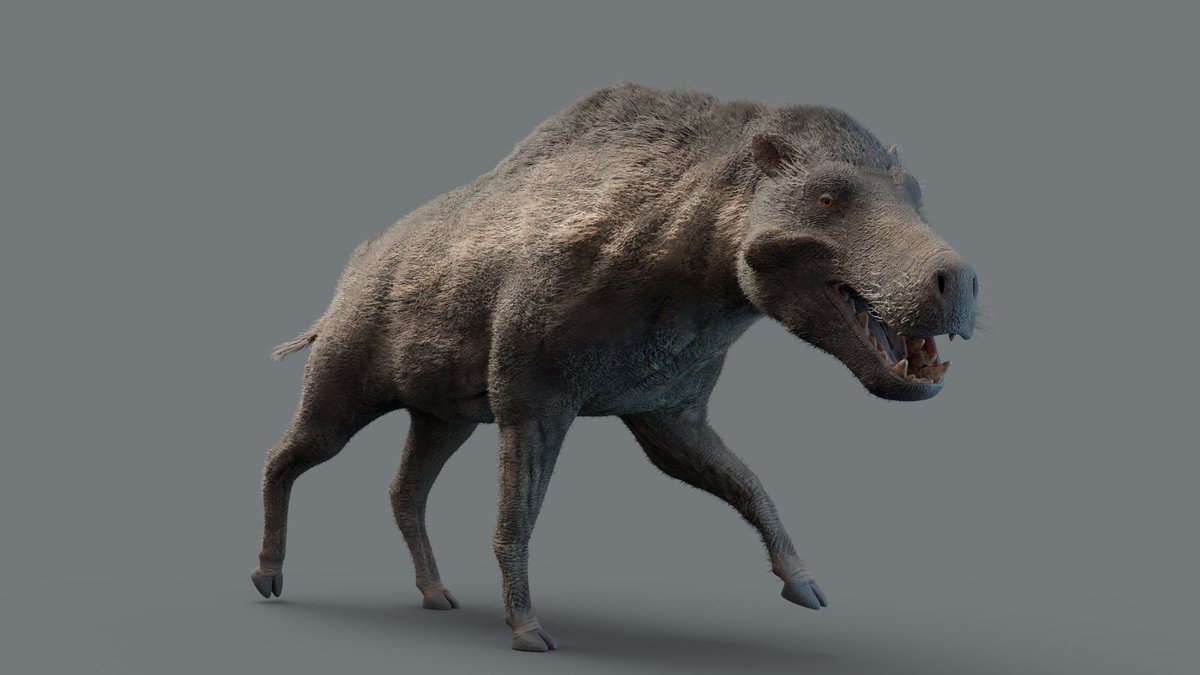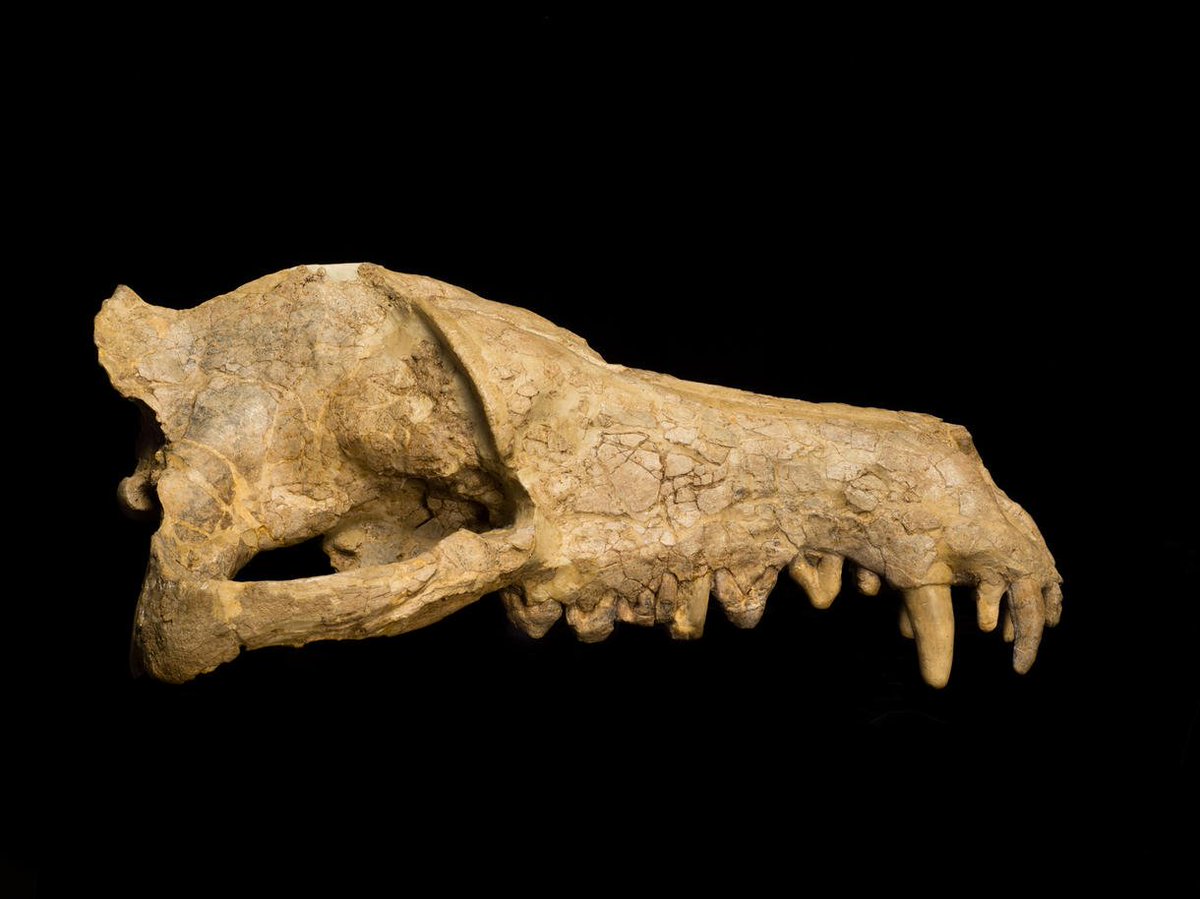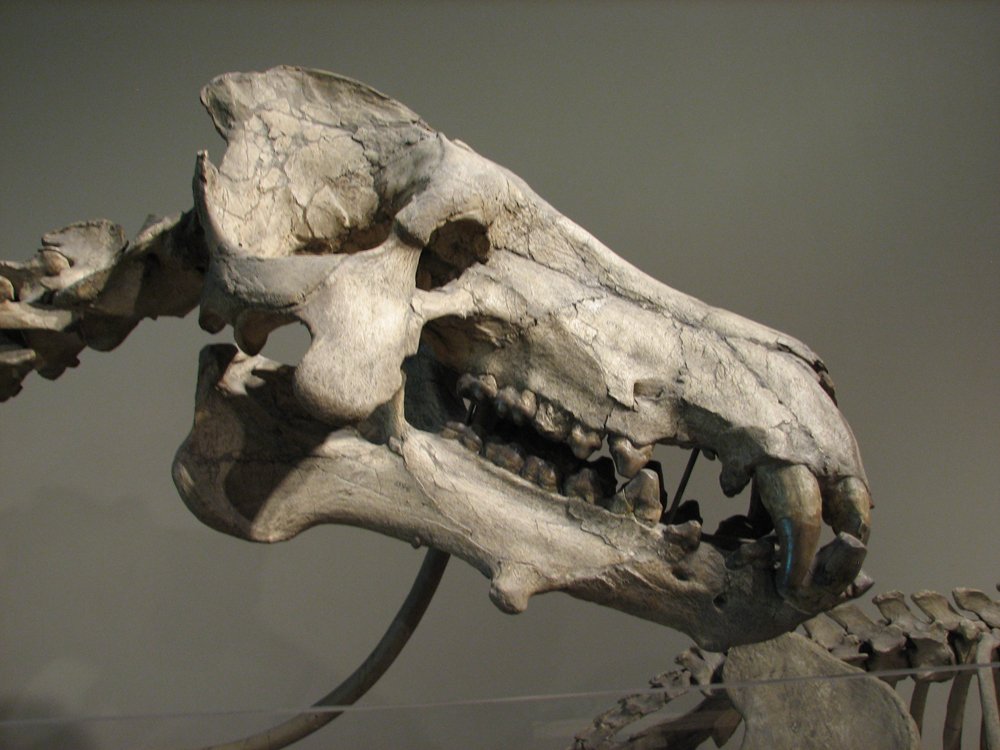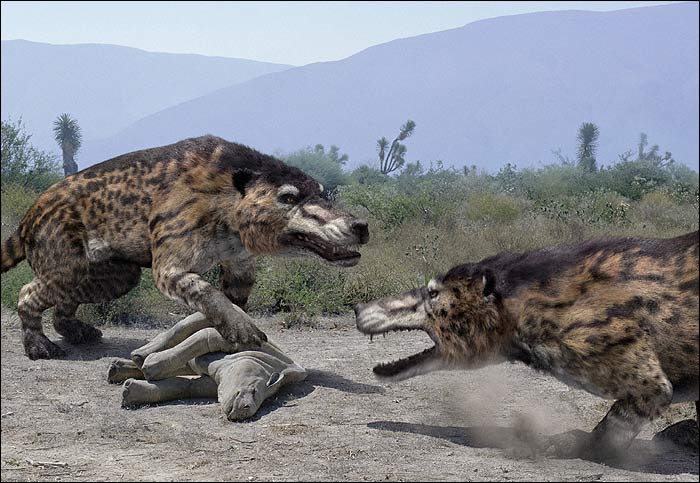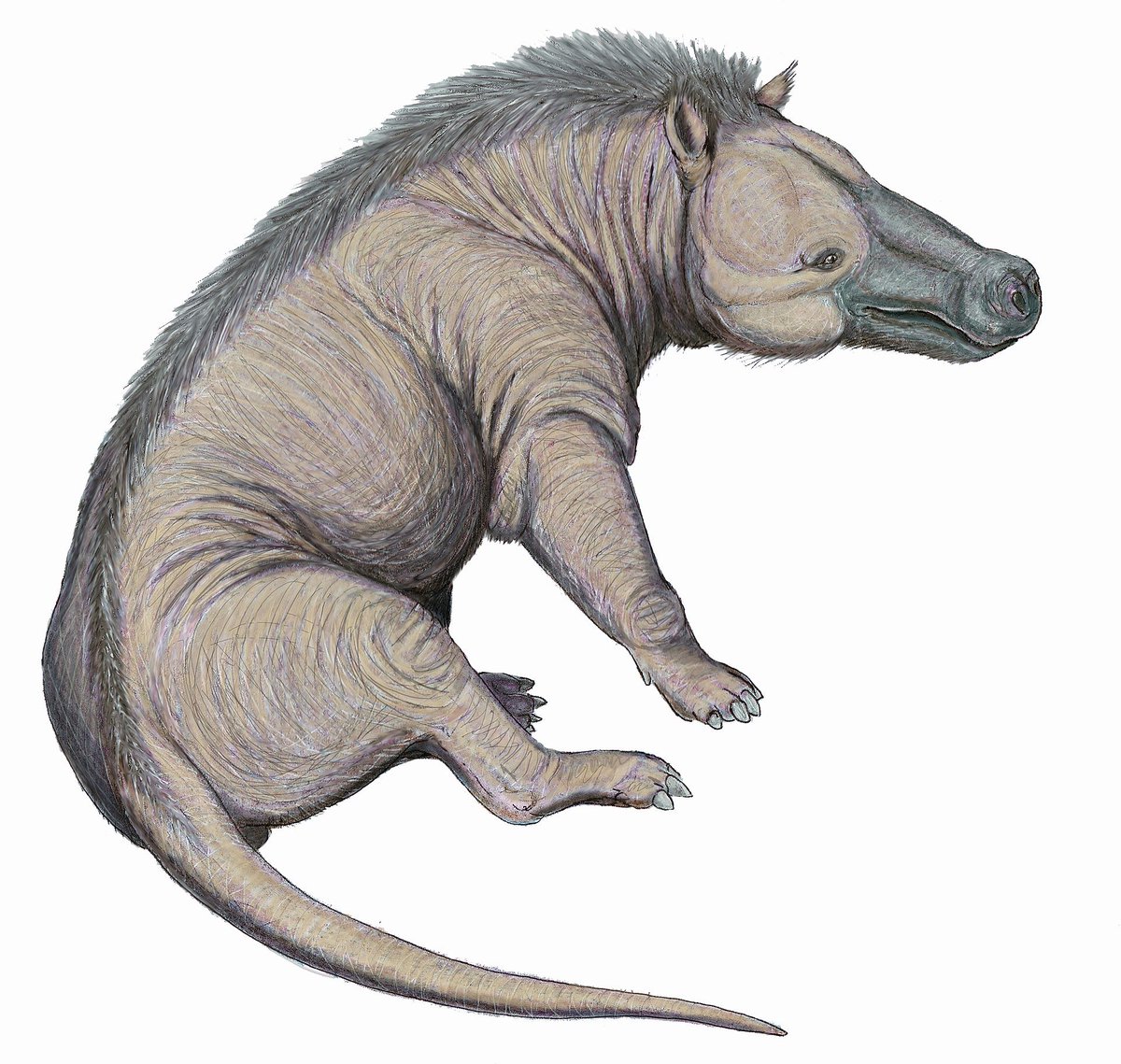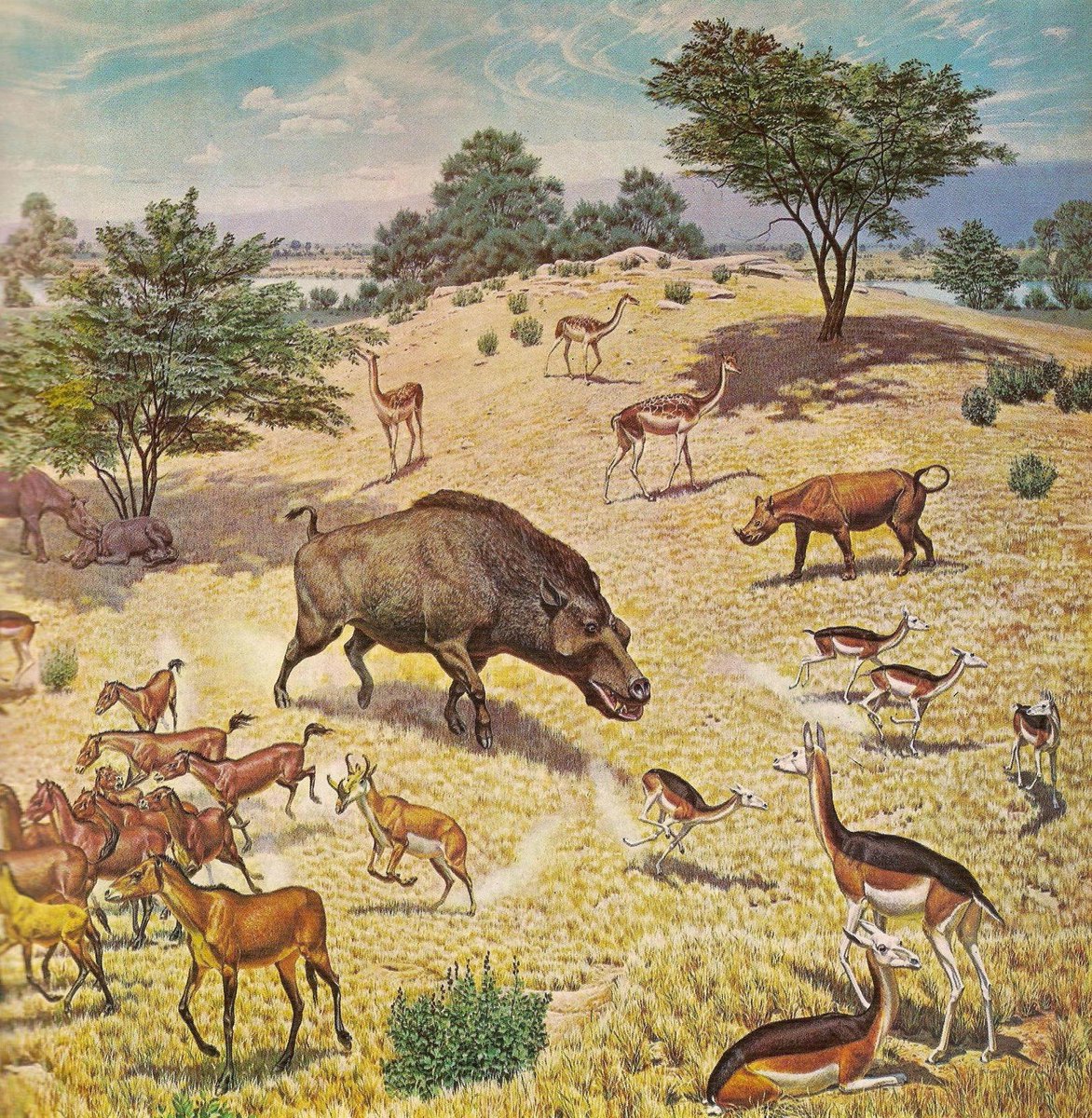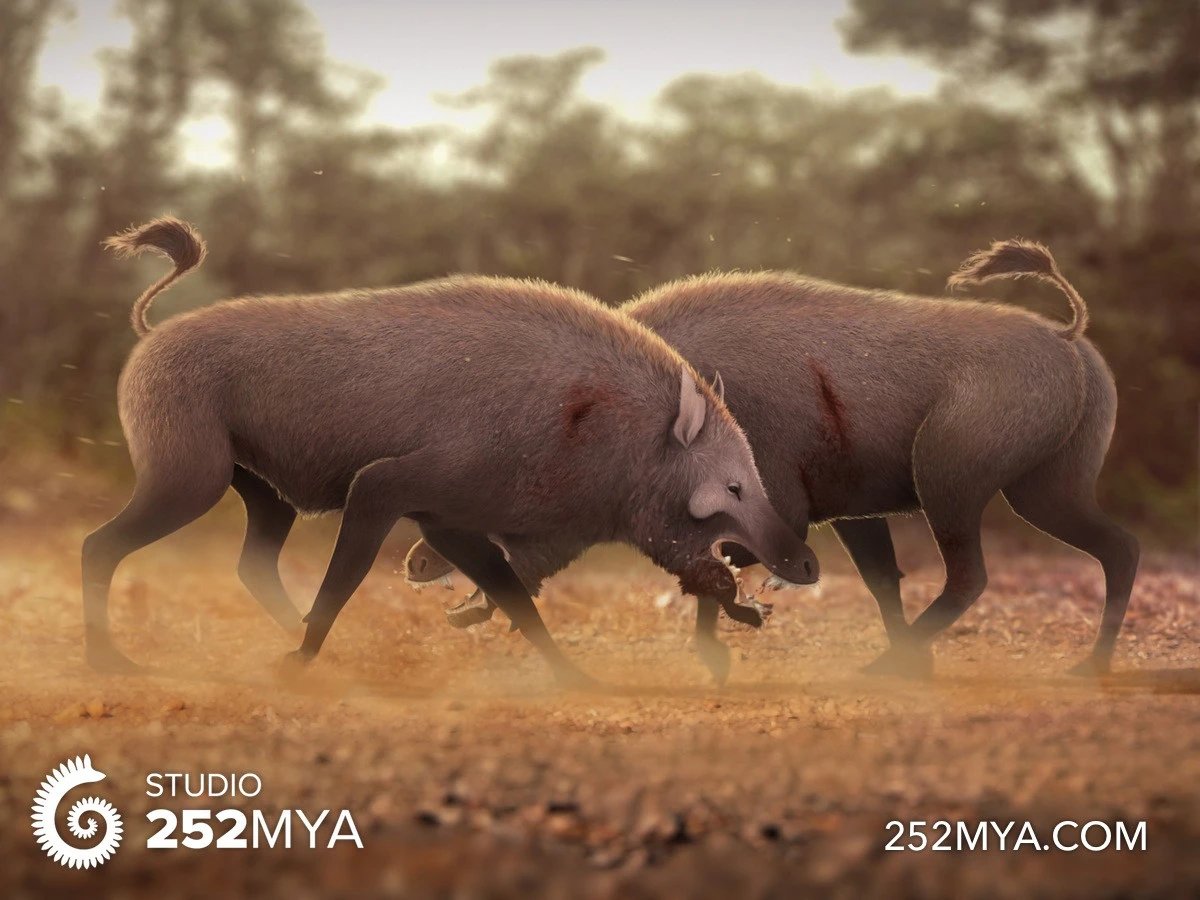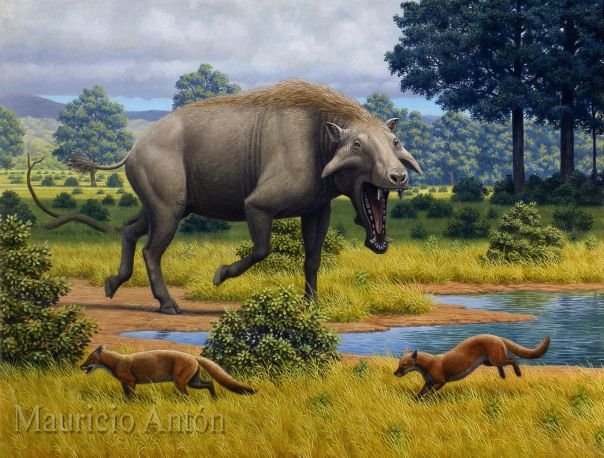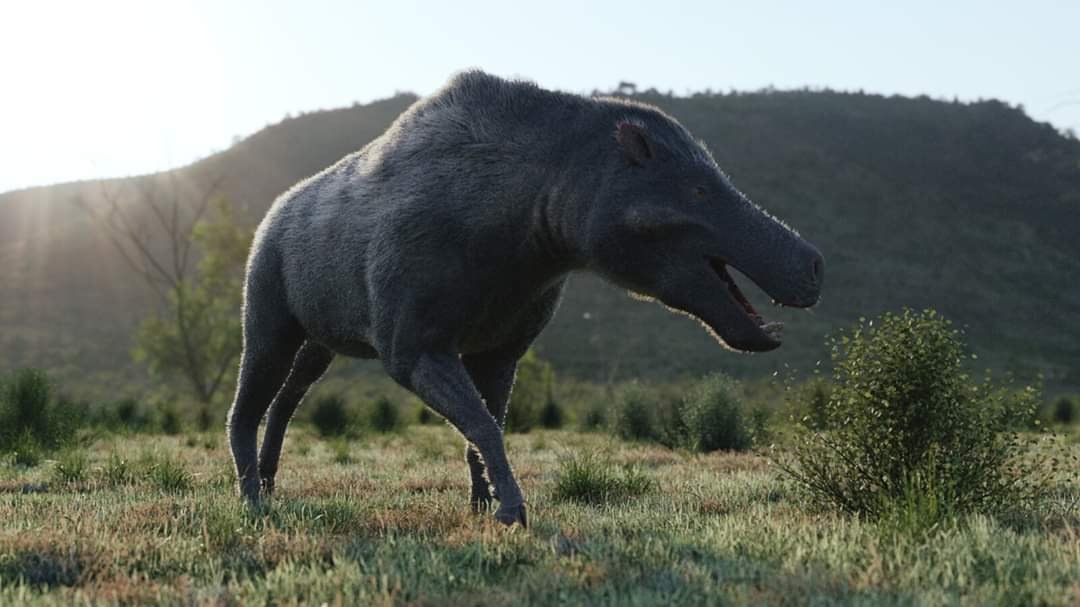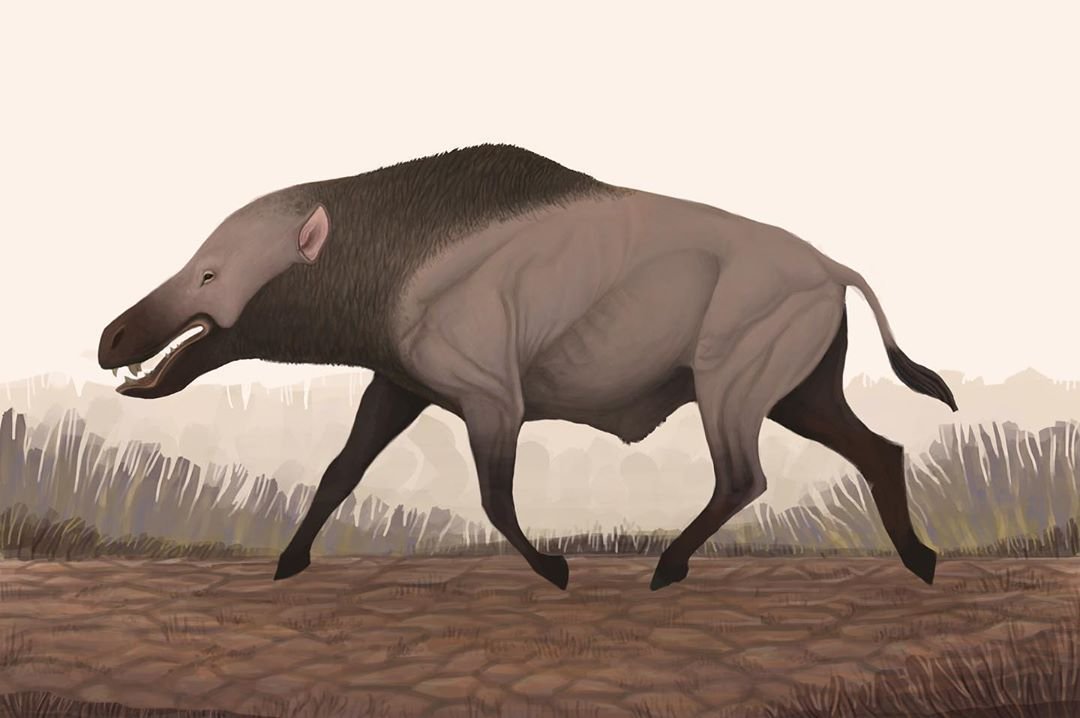As promised, here is a thread on entelodonts, some of the coolest, scariest mammals that ever walked the earth! I& #39;m going to pull mostly from Wikipedia bc I& #39;m basic and don& #39;t have the time/focus to look up papers, but I will try to give credit where due.
(Charles R. Knight)
(Charles R. Knight)
Entelodonts are an extinct family of even-toed ungulates often called "Hell Pigs," which, while the resemblance is there, they are not actually pigs. They& #39;re sorta their own thing. They lived from the Eocene to Miocene epochs, going extinct juust under 16 million years ago.
If you& #39;re like me, your first exposure to entelodonts was via BBC& #39;s Walking with Beasts, which, if a bit outdated, is an excellent entry point for anyone interested in prehistoric mammals.
You may have also seen that cursed "Daeodon at the door" meme. *shudder*
You may have also seen that cursed "Daeodon at the door" meme. *shudder*
So what ARE entelodonts? Like I said, they& #39;re their own family--but Spaulding et al. found them to group with hippos and cetaceans in the clade Cetancodontamorpha. Cetancodontamorpha includes hippos, cetaceans, and anything more closely related to them than anything else alive.
Side note: the especially sharp-eyed may have noticed the presence of Andrewsarchus on this cladogram. This was at one point considered the largest carnivorous mammal ever to live, but its affinities are not resolved. I& #39;ll come back to this later.
(R. Mickens for AMNH)
(R. Mickens for AMNH)
So what& #39;s up with entelodonts? Why were they... like that? Looking at anatomy, one instantly notices that entelodonts were armed to the teeth. What did they do with that weaponry?
(Mauricio Anton)
(Mauricio Anton)
Some have suggested that they were top predators, but I find this unlikely. In an ecosystem with saber-toothed nimravids, hyaenodonts, and bear-dogs, being top predator is a pretty big deal.
Skull of Hyaenodon--put this on a creature that weighs up to 1K lbs. (Ghedoghedo)
Skull of Hyaenodon--put this on a creature that weighs up to 1K lbs. (Ghedoghedo)
If we look at the teeth, the ones that stand out first are the massive canines. From what I& #39;ve read, I believe they were mostly used in intraspecific combat much like their relatives hippos.
(Matt Celeskey)
(Matt Celeskey)
On that topic, check out those cheek flanges on this Archaeotherium--they functioned as anchors for MASSIVE jaw muscles. This animal had strong jaws, and a wide gape as well, again, like their riverine cousins today. The males had bigger flanges in this species.
(Zack Neher)
(Zack Neher)
Side note: check out this AWESOME hippo-like reconstruction of Archaeotherium by RAPHTOR on Deviantart:
Anyway, there IS some evidence that entelodonts did eat meat. K. A. Sundell describes what appears to be a cache site of Poebrotherium (a small camel) carcasses, partially processed and stored by Archaeotherium.
(Taken from http://douglasfossils.com"> http://douglasfossils.com )
(Taken from http://douglasfossils.com"> http://douglasfossils.com )
What interests me is that these animals seem not only to have been partially eaten and stored, but actually KILLED by Archaeotherium. Evidence includes tooth marks on the uneaten heads that match the entelodont& #39;s dentition.
( http://douglasfossils.com"> http://douglasfossils.com )
( http://douglasfossils.com"> http://douglasfossils.com )
Now, Poebrotherium is much smaller than Archaeotherium. A fossil trackway in Nebraska appears to show an Archaeotherium following a cow-sized rhinoceros and its potential predator, possibly hoping to scavenge the kill. Unfortunately, I can& #39;t find who described these tracks.
Anyway, what I understand from all this is that entelodonts opportunistically preyed on much smaller animals, but probably only ate similarly-sized species when scavenging. Pigs and peccaries today have a similar feeding pattern, but remember, entelodonts are not actually pigs.
As for other foods, entelodont teeth seem to show a lot of wear from grit and sand, but not what you would expect to see on a grazer& #39;s teeth. Perhaps they were eating a lot of roots and tubers? They didn& #39;t seem to have nasal discs like pigs; maybe they didn& #39;t root like pigs do
Taken together, I believe the skulls of entelodonts indicate animals with very generalist, opportunistic diets, that also engaged in a lot of intraspecific combat. We have little evidence for sociality among them--perhaps they defended a territory? Or just mating rights.
Archaeotherium, a species of entelodont I mentioned quite a bit, stood over a meter in height at the shoulder and was roughly two meters in length. The largest known entelodont was Daedon, whose HEAD was a meter long. They stood over five feet tall at the shoulder
(Max Bellomio)
(Max Bellomio)
Returning to Andrewsarchus: Some consider this mammal to be closely related to or even among the entelodonts. Indeed, it possesses similar teeth and overall skull profile. My main reservation is the lack of cheek flanges and postorbital bar seen in entelodonts.
During the making of Walking with Beasts, Andrewsarchus was considered a mesonychid, a somewhat wolfy-proportioned carnivore with hooves, hence the HUGE body size it was given in reconstruction. But all we have is a single skull, and no postcranial material.
With new understanding of its affinities, Andrewsarchus& #39; body probably wasn& #39;t quite so big--after all, you may have noticed that entelodonts& #39; heads are HUGE compared to their bodies. See also: hippos and whales
Entelodont or not, Andrewsarchus is almost definitely a member of the same clade, Cetancodontamorpha. It would be awesome to get more material of this genus. A man can dream.
Andrewsarchus as a Cetancodontamorph, by Dmitry Bogdanov
Andrewsarchus as a Cetancodontamorph, by Dmitry Bogdanov
Anyway, the picture I want to paint is of entelodonts is an animal that dominated its environment--not that it was the top predator, but because it was very capable of extracting what it needed from the ecosystem and pretty much no one wanted to tangle with it.
(Jay Matternes)
(Jay Matternes)
So what drove entelodonts to extinction? If I had to guess, it& #39;s because their niche disappeared--sometimes, a generalist gets replaced by a series of species that do each of its jobs better. Regardless, entelodonts existed for over 20 million years, a pretty good run.

 Read on Twitter
Read on Twitter